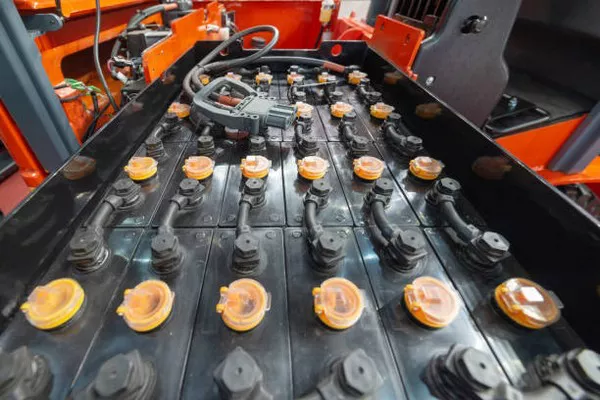Electrical equipment plays an indispensable role in various aspects of our lives, from powering our homes to driving industries forward. However, one crucial consideration often overlooked is how electrical equipment interacts with water. Water and electricity are a hazardous combination, capable of causing serious damage or even fatal accidents if not managed correctly. In this article, we’ll delve into the complexities of water exposure and its impact on electrical equipment, exploring preventive measures and best practices to ensure safety.
Understanding the Risks:
Water conducts electricity, and when it comes into contact with live electrical components, it can lead to short circuits, electrical fires, or electrocution. The severity of these risks depends on various factors such as the voltage of the equipment, the amount of water involved, and the duration of exposure.
Electrical equipment exposed to water can suffer from corrosion, insulation breakdown, and component failure. Even small amounts of moisture can compromise the integrity of the equipment over time, leading to malfunctions or complete failure.
Common Scenarios of Water Exposure:
Water exposure can occur in numerous settings, including residential, commercial, and industrial environments. Some common scenarios include:
Outdoor Environments: Electrical equipment installed outdoors, such as lighting fixtures, power outlets, or machinery, are particularly vulnerable to water exposure from rain, snow, or humidity.
Industrial Settings: In industries like manufacturing or construction, water may be present due to processes like cleaning, cooling, or chemical reactions, posing a constant risk to electrical equipment.
Indoor Spaces: Even indoor spaces are not immune to water hazards. Leaking pipes, condensation, or accidental spills can all result in moisture contacting electrical installations.
Mitigating Risks:
To mitigate the risks associated with water exposure, several preventive measures and best practices should be followed:
Proper Equipment Selection: Choose electrical equipment specifically designed for the intended environment. Equipment with appropriate ingress protection (IP) ratings ensures resistance to dust and water, reducing the likelihood of water penetration.
Enclosures and Barriers: Install protective enclosures or barriers around electrical equipment to shield them from direct water contact. Enclosures should be rated according to the level of protection required for the specific environment.
Ground Fault Circuit Interrupters (GFCIs): Use GFCIs, which are designed to quickly disconnect the power supply when they detect a ground fault, reducing the risk of electric shock in wet conditions.
Regular Inspections and Maintenance: Implement a routine inspection and maintenance schedule to identify and address any signs of water damage or deterioration promptly. This includes checking for leaks, corrosion, or worn-out insulation.
Drying Techniques: In case of accidental water exposure, promptly power down the affected equipment and employ appropriate drying techniques, such as using fans or dehumidifiers, to remove moisture and prevent further damage.
Training and Awareness: Educate personnel about the risks associated with water and electricity and provide training on proper handling procedures, emergency protocols, and the importance of safety measures.
Emergency Preparedness: Have emergency response plans in place, including protocols for dealing with electrical emergencies in wet conditions. This may involve shutting off power sources, evacuating the area, and contacting trained professionals for assistance.
Compliance with Standards and Regulations:
Adherence to industry standards and regulations is crucial for ensuring the safety and reliability of electrical equipment in wet environments. Standards organizations such as the International Electrotechnical Commission (IEC) and the National Electrical Manufacturers Association (NEMA) provide guidelines and ratings for equipment design, installation, and testing.
The IP Code, or Ingress Protection Code, established by the IEC, specifies the degree of protection provided by enclosures against the intrusion of solid objects, dust, and water. The IP rating consists of two digits, with the first digit indicating protection against solid objects and the second digit indicating protection against water. For example, an IP67-rated enclosure provides full protection against dust (6) and can withstand immersion in water up to 1 meter depth for 30 minutes (7).
Similarly, NEMA standards classify enclosures based on their ability to protect against environmental hazards, including water. NEMA ratings range from NEMA 1 (general indoor use) to NEMA 6 (submersible in water under specified conditions).
By adhering to these standards and selecting equipment with appropriate ratings, users can ensure that electrical installations remain safe and reliable in wet conditions.
Conclusion:
Water and electricity do not mix well, and the consequences of their interaction can be severe. Whether in residential, commercial, or industrial settings, it is essential to understand the risks associated with water exposure and take appropriate measures to mitigate them.
By selecting suitable equipment, implementing preventive measures, conducting regular inspections, and adhering to industry standards, individuals and organizations can minimize the risk of electrical hazards in wet environments. Additionally, proper training and emergency preparedness are essential aspects of ensuring the safety of personnel and property.
Ultimately, maintaining a proactive approach to water safety in conjunction with electrical equipment is key to safeguarding lives, preventing accidents, and preserving the integrity of electrical systems. By prioritizing safety and adherence to best practices, we can ensure that electrical equipment remains reliable and effective, even in challenging environmental conditions.

